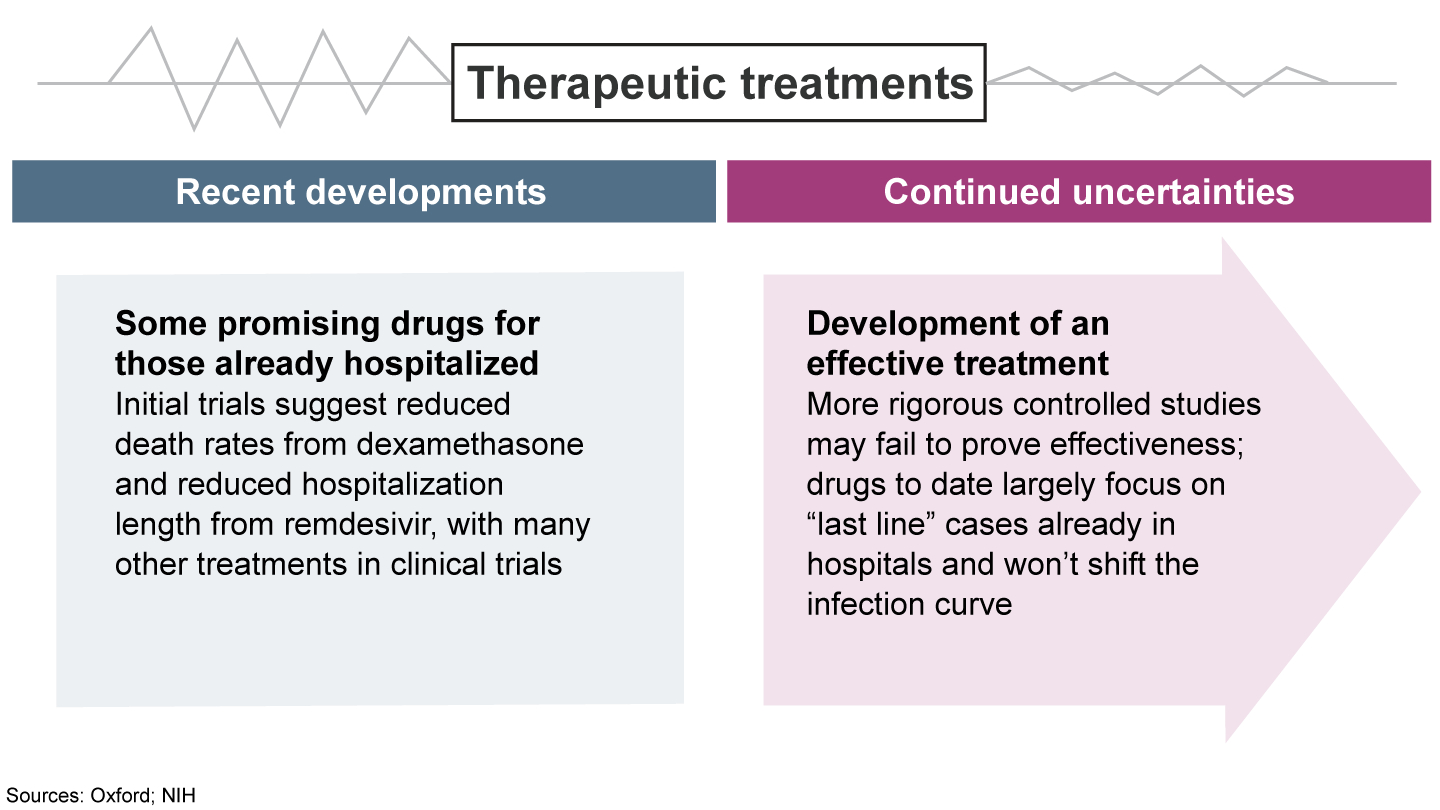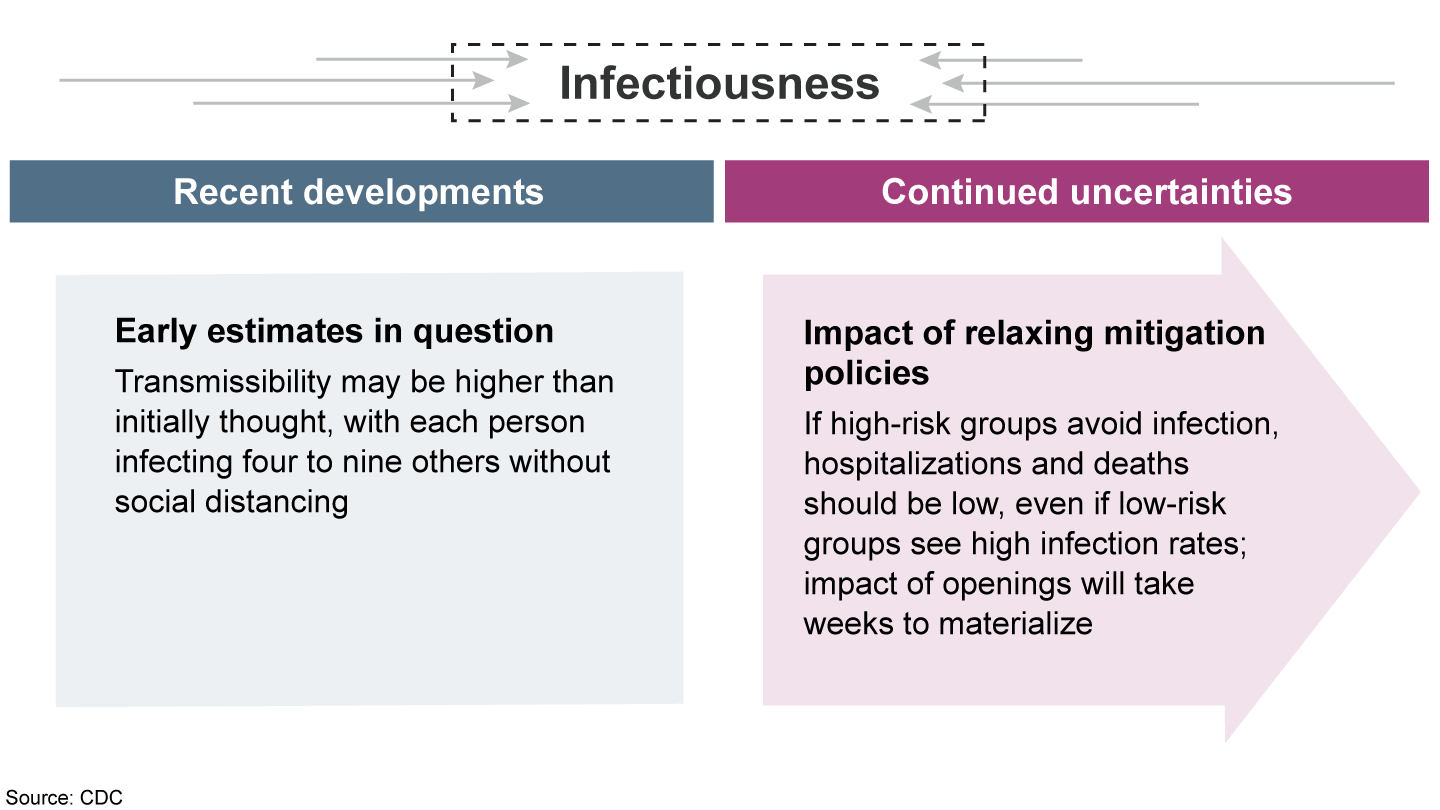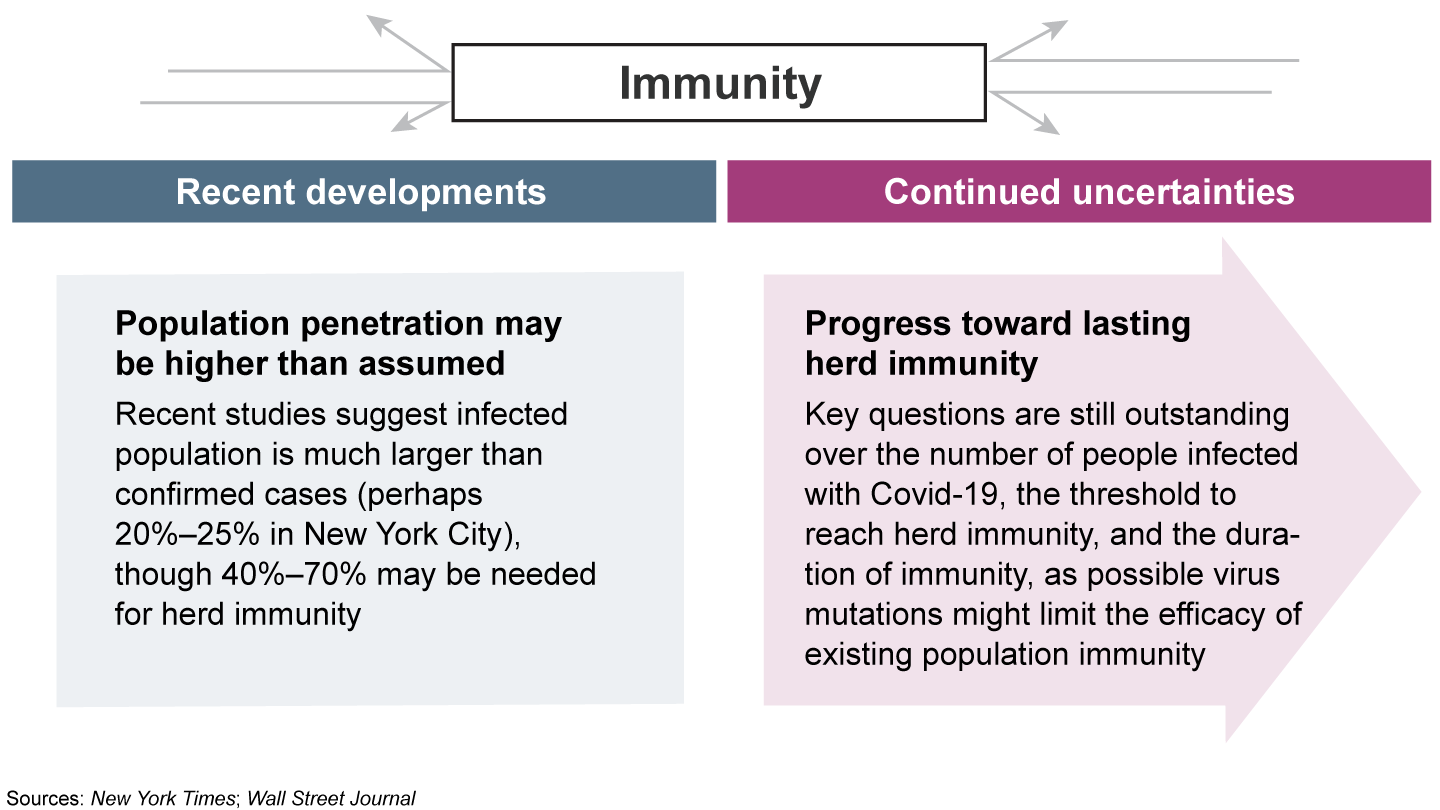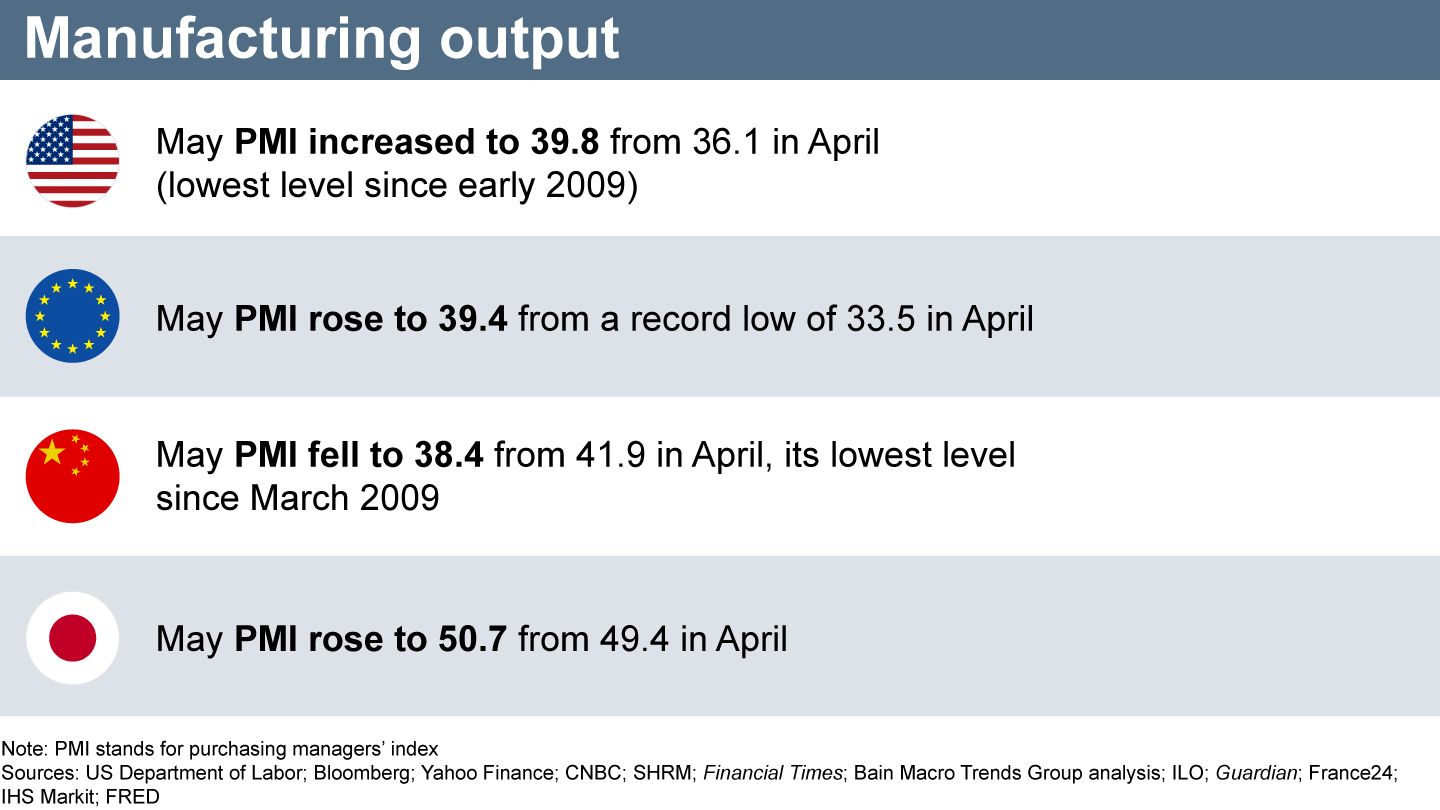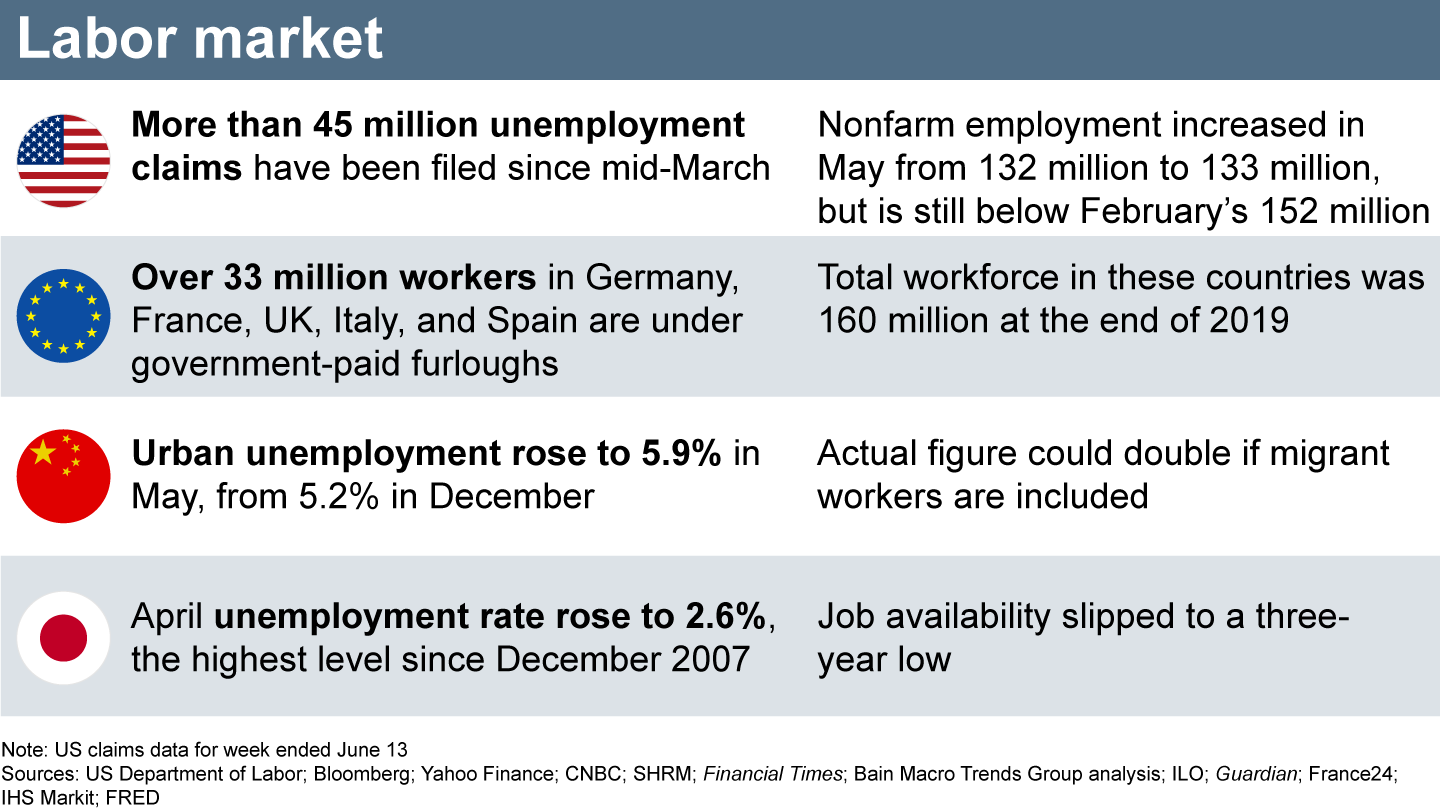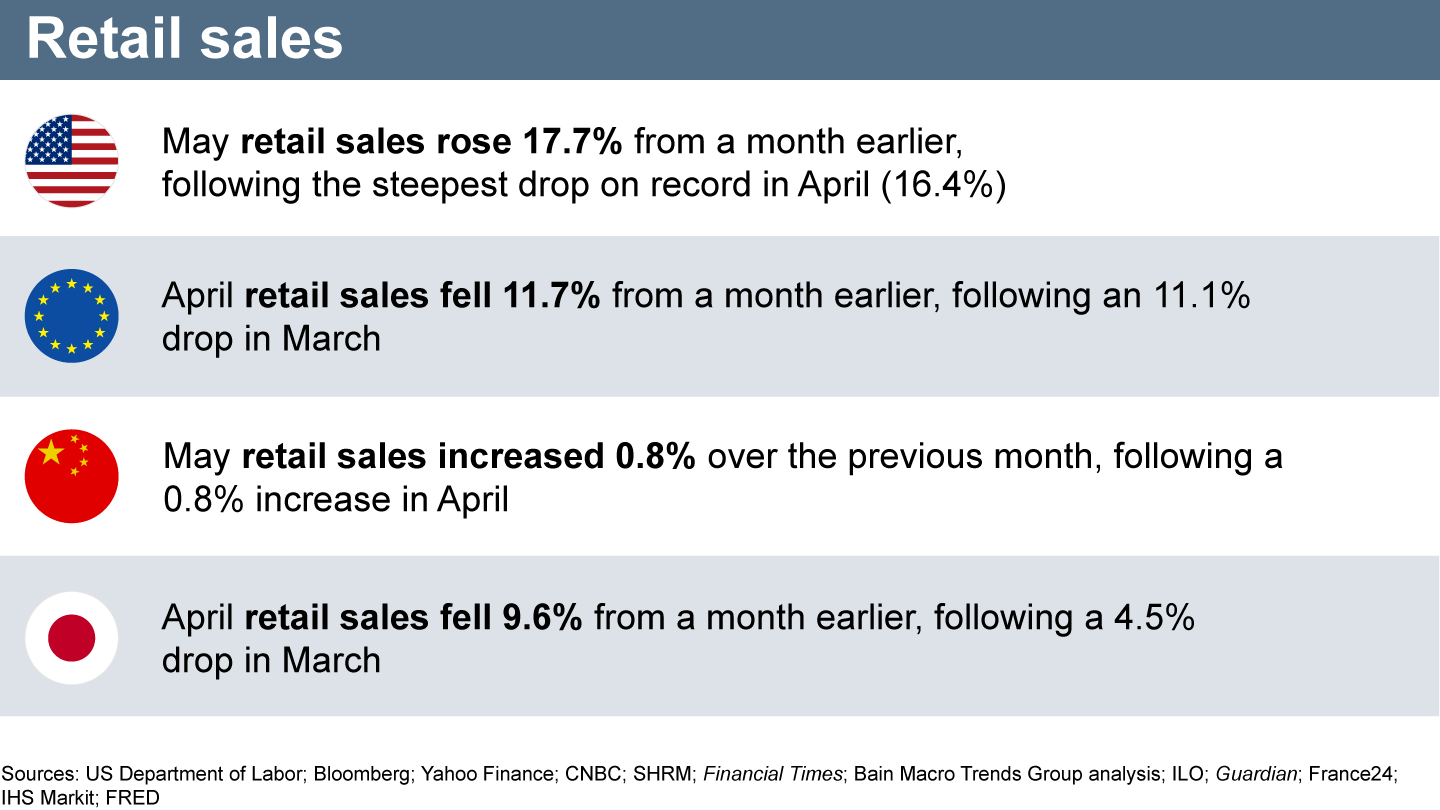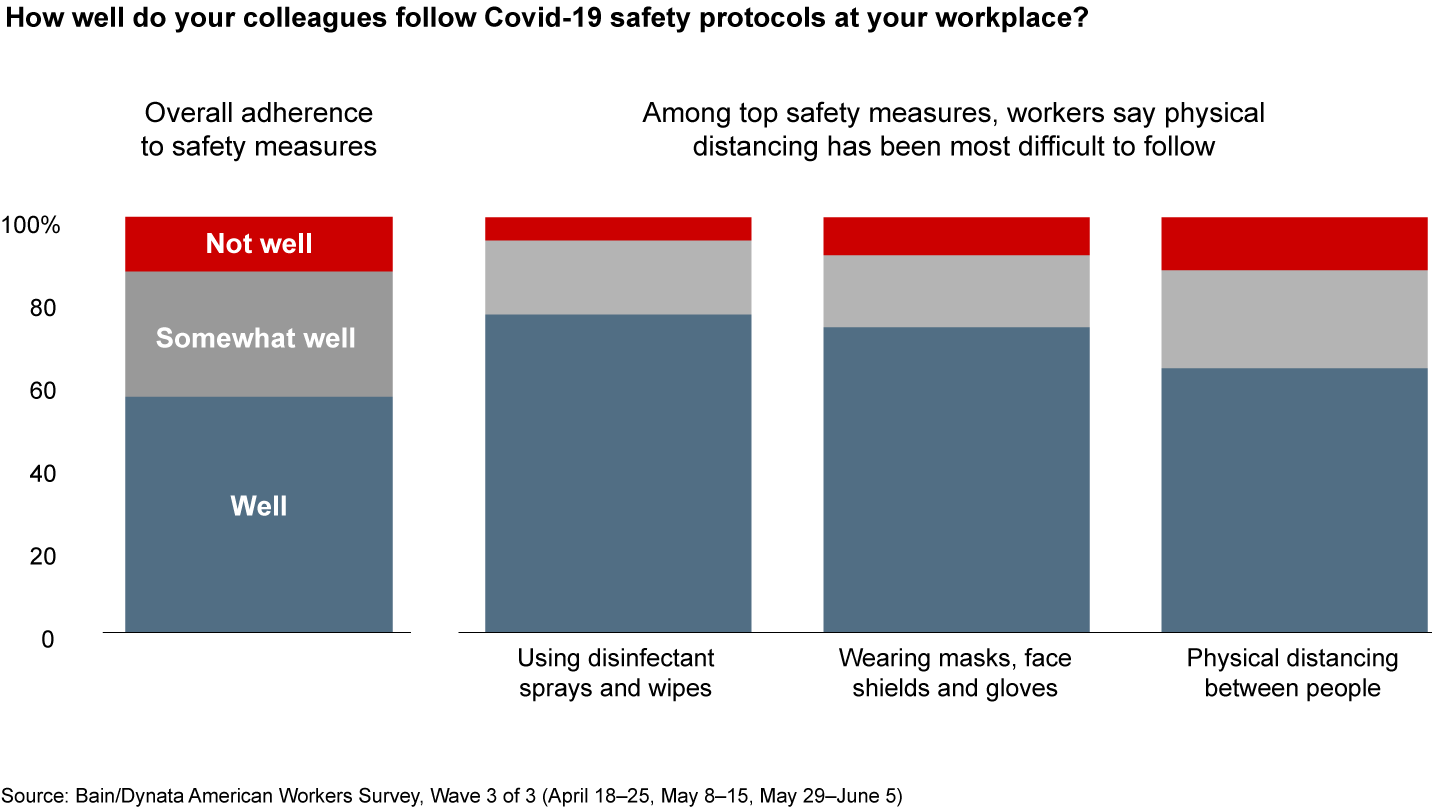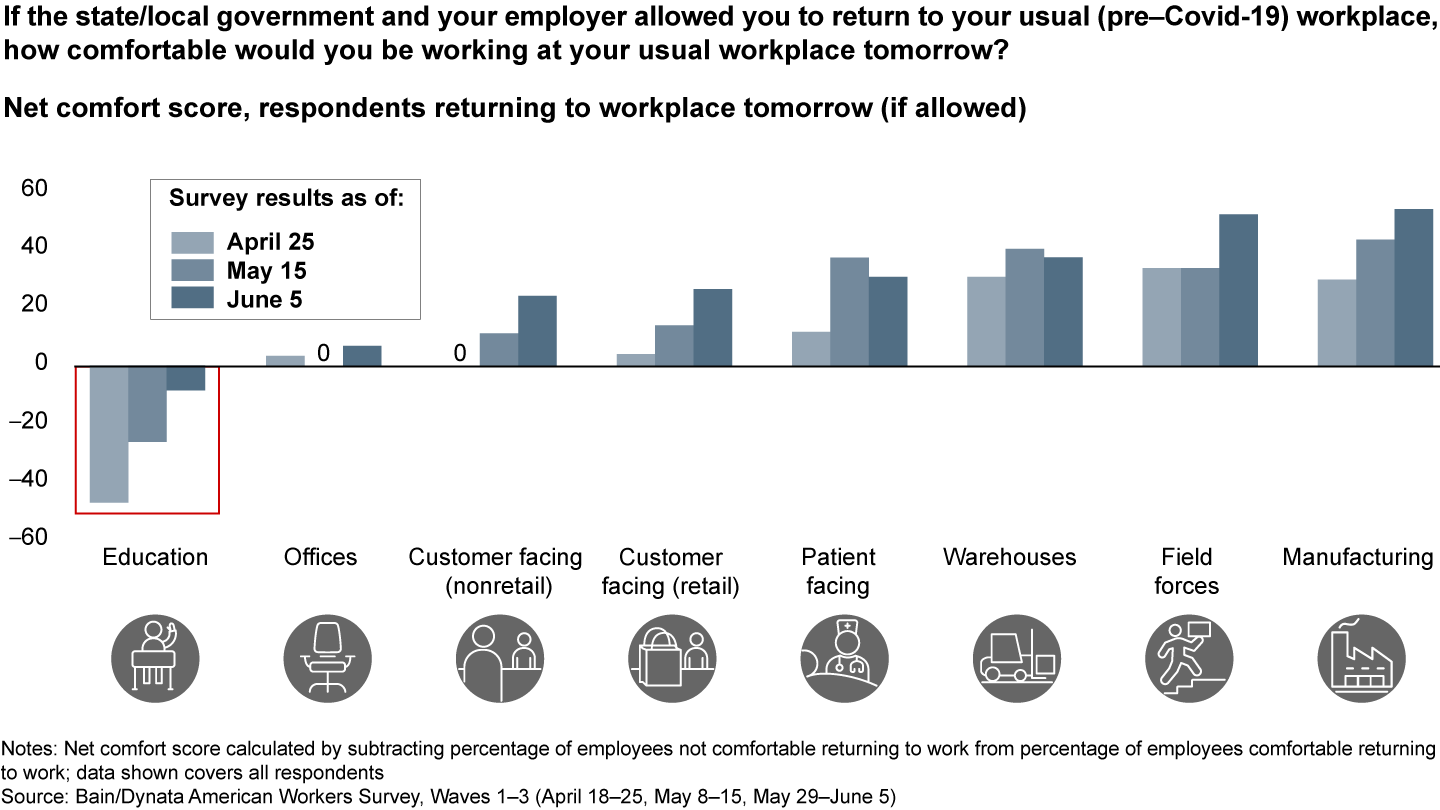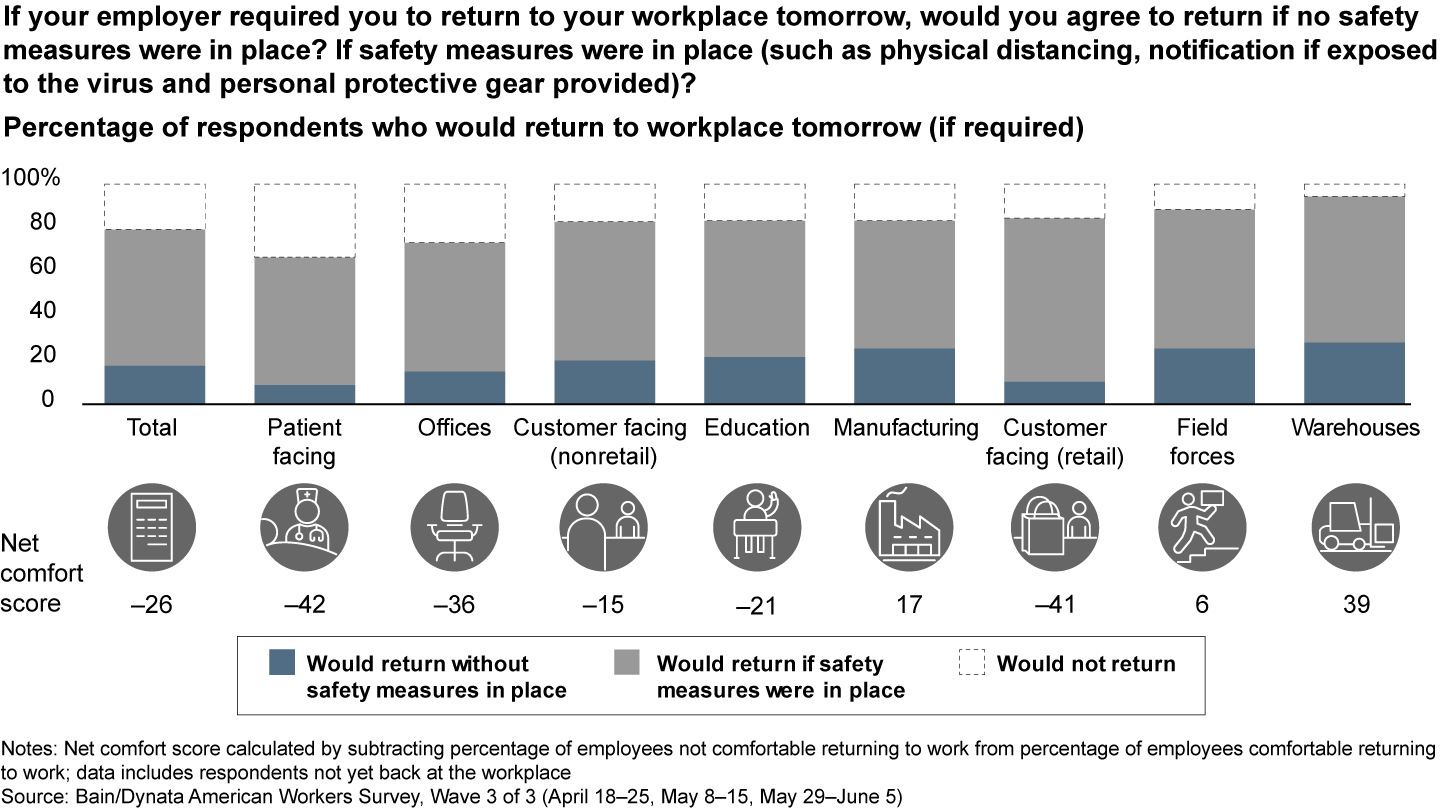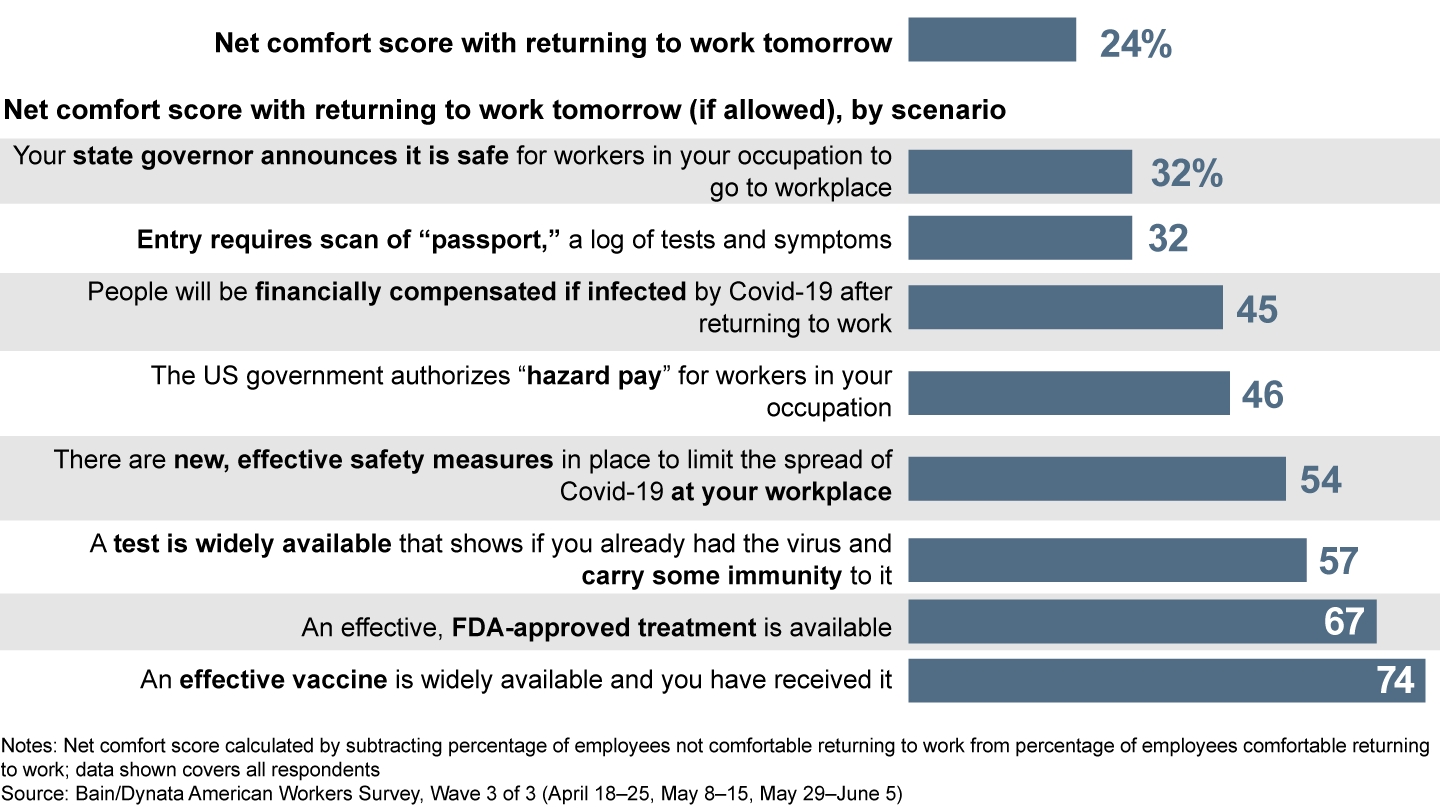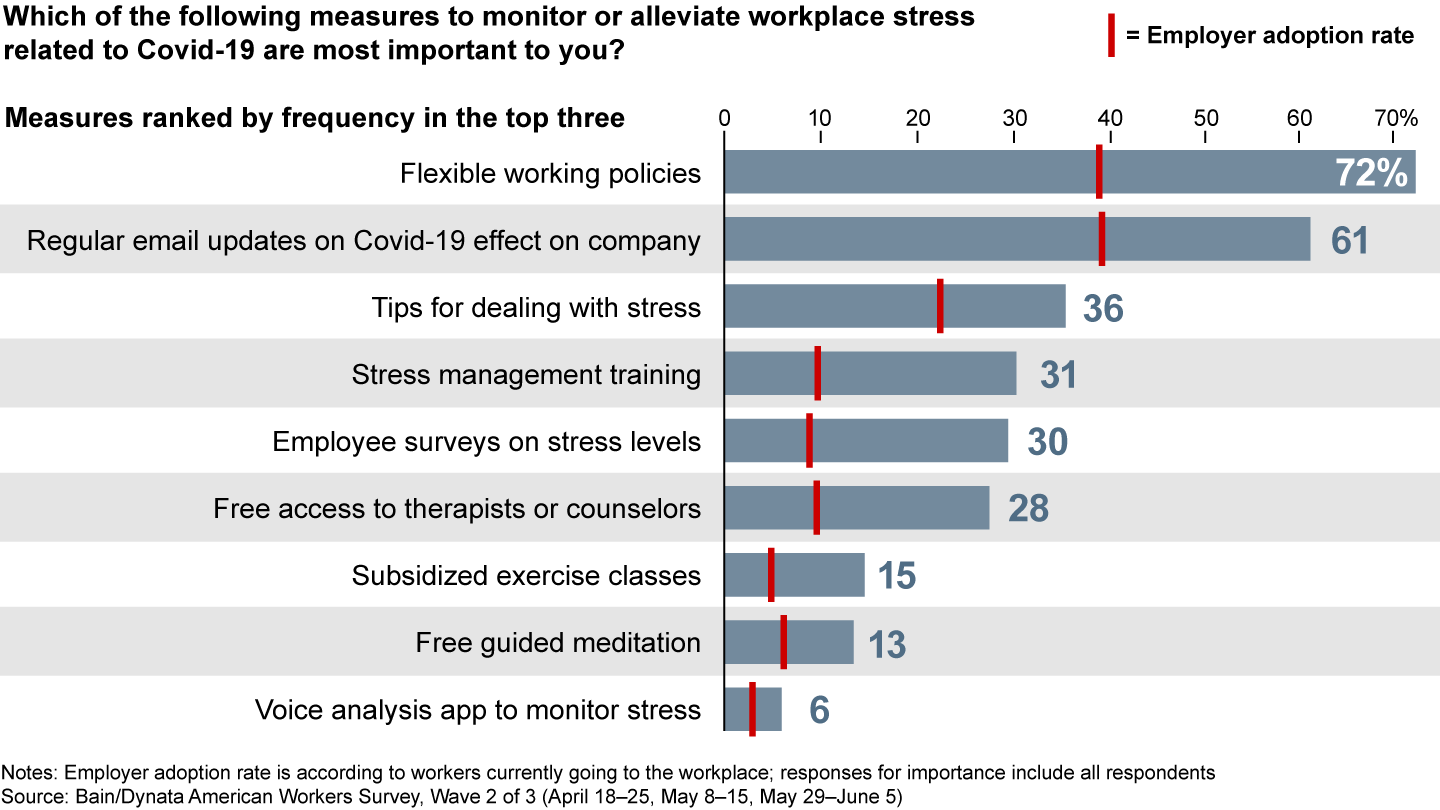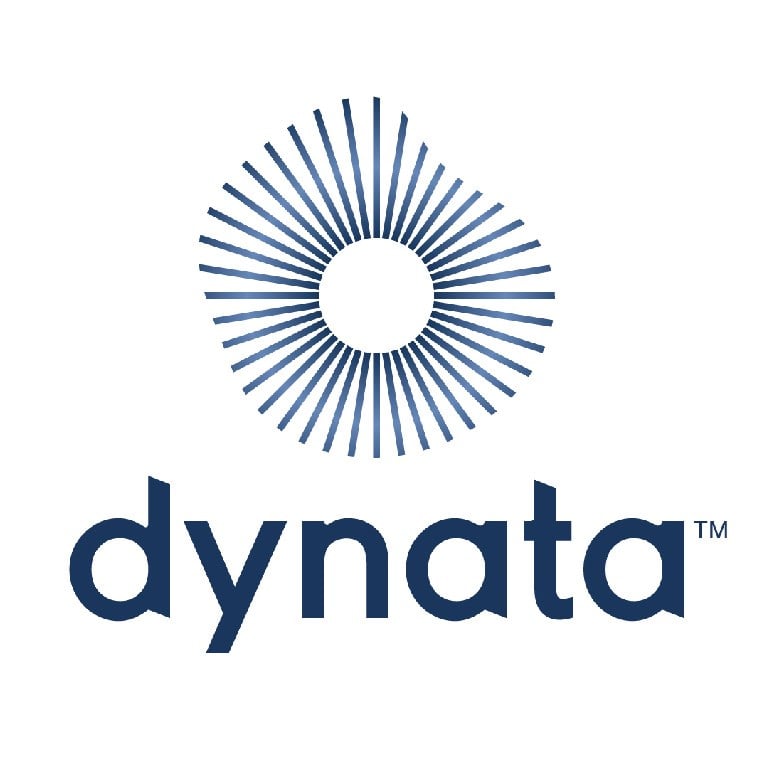Brief

Recoveries have always mattered in business. Some of the biggest shifts in market share occur coming out of downturns, when new industry leaders—and new industries—often emerge. Rarely, though, has recovery meant putting people’s lives at risk.
Yet that’s where we are today.
The post–Covid-19 world will accelerate some existing trends and create new ones, and all business models will have to evolve in order to grow and thrive. But there’s no way to accurately predict what comes next, and it’s a dangerous mistake to rely too heavily on forecasts, which have to be complemented with highly adaptive and resilient business models.
For leadership teams, the recovery will mean restarting—in some cases, reinventing—operations in an unstable world of shifting conditions. The leading companies will be defined by their ability to balance resilience, adaptability and prediction (see Figure 1). They’ll advance where they can, retreat as soon as they must and adapt as needed. They’ll build experience to do that again and again, by office, by work site, by plant, by community, by country. And they’ll put in place the right mitigation protocols and support to protect their employees, many of whom are eager to get back to work, but worried about the risk of getting sick.

Getting back to work away from home is the first step in recovery, once companies have taken critical actions to protect the business. The return to work also sets the stage for retooling the business for a different future (see the Bain Brief "Covid-19: Protect, Recover and Retool"). But this recovery won’t follow a straight line, so executives should get used to thinking about it dynamically. How should they track demand as it ebbs and flows to quickly serve customers when and where they show up? Are there sound actions to stimulate demand? How can they ensure value chains are viable while implementing resourceful workarounds? On these and other critical issues, leaders can’t wait to have most of the facts; instead, they’ll make hard decisions and commit to learning by doing—developing a pragmatic campaign for returning to work and getting started. The plan of action for recovery should be: advance, retreat, adapt, repeat.
The companies that can protect their people and build the most experience with real agility will create a competitive advantage and accelerate faster out of the downturn.
Reading the signs
Even as Covid-19 commands the world’s undivided attention, much is unknown about the novel coronavirus, its pathology and its future (swipe through Figures 2–5 below). That makes it difficult to rely on experts, and impossible to become one yourself.
At the same time, economic pressure to restart operations is acute. We continue to update the data, but as of mid-June, unemployment remained at historic levels in many labor markets around the world. And despite some early signs of recovery, retail sales and manufacturing output remained well below pre-Covid-19 levels (swipe through Figures 6–8 below).
As early as April, concerns about joblessness, lost income and the economy were vying with fear of infection. For a time, the Bain/Dynata Consumer Health Index Survey showed financial concerns outstripping health concerns among US workers. In recent weeks, our survey shows both levels of concern easing from their late March highs, but with financial worries largely continuing to edge out health fears (see Figure 9).

Back to work: A question of demand and supply
Willing workers are a critical component of the recovery, but companies can’t just turn the lights back on and hand out masks at the door to a returning workforce. For most executives, the task at hand is less like restarting a business than like starting a business. They face some of the same questions that confront every business founder: What are the customer needs that I can serve? Where is the demand, and how will we configure the business systems—supply chains, production and service operations, distribution—to meet it?
Only by first understanding the demand side of the equation can executives gauge their workforce needs and the urgency of returning different groups of workers to their jobs and work sites. This starts with evaluating customer demand by product or service and geography, and assessing the abilities of suppliers and distributors to support that demand. How has Covid-19 affected direct customers’ demand? How are shifts in end-market demand affecting them? Are there ways to stimulate demand? Likewise, are tier-1, -2 and -3 suppliers capable of resuming production? How has Covid-19 affected the supply chain, and how will that constrain production and logistics? These questions will help executives estimate how many people need to return to work physically to meet that demand.
And that number will be radically different today than it would have been before Covid-19 thrust us into a forced experiment in working more efficiently and effectively. In recent weeks, every company has learned new ways of working—what work can continue remotely from home, can be done more efficiently or can be automated. And every company has discovered, through the crucible of the coronavirus, that some work simply doesn’t need to be done anymore.
Nor will the number of employees returning to work grow in a steady upward line. Companies must return people to work in phases, aiming to increase their numbers over time, but equally ready to shrink them—perhaps drastically—when setbacks occur. With the virus still active and an effective vaccine still many months away at best, new outbreaks are inevitable for countries or communities and very possible at work sites.
With the crisis breaking apart business systems, setting up Agile teams is the most effective and scalable way to adjust and build resiliency into fluid operational environments. Local teams, guided by nonnegotiable safety requirements, will learn and respond to conditions on the ground, continuously adapting, putting solutions in place and reporting successes to leaders who can scale them across the business. Companies will constantly adjust priorities and resources between the teams that are advancing and those suddenly forced to retreat. This is the very definition of Agile.
For smaller companies—with a single product in a single region—adding back operations may be a delicate dance. But the greater a company’s geographic and product diversity, the more operations will fluctuate. For global firms with many sites, products and operations around the world, it will be a wild fandango (see Figure 10).

The workforce you need
Tracking real demand provides companies with a rational way to determine how many people need to return to work and where. But understanding the workforce they need—and who needs to return to a work site—is just the beginning of the recovery challenge. The top question every company faces is how to keep those employees safe in a constantly changing environment and how to mitigate the risks they face if they return to work.
This assumes, not incidentally, that they can get there. Even if stay-at-home orders are lifted, workers may face impossible childcare or commuting choices if schools remain closed or transportation is limited or unavailable in their communities. Both are strong possibilities: Schools and transportation are themselves high-risk workplaces for their own employees, and Bain’s latest American Workers Survey shows that teachers are more concerned about returning to the classroom than workers at most other sites.
Likewise, companies have little ability to mitigate virus risk in the community where their workers live. Cities aren’t likely to progress continuously toward recovery. A local outbreak that returns a city or country to an earlier phase may force an entire wave of a workforce to retreat despite the best of workplace protections. Here again, companies that respond with resilience and agility—advancing one wave in a city or different part of the world even while withdrawing another wave from an affected community—will accelerate most quickly through the recovery.
What does this all look like on the ground? For companies, returning employees physically to work means identifying and mitigating workplace risk. And they must do so in ways that build trust among employees.
Whether employees work in a store, an office, a factory, a warehouse, out in the field or at your customers’ homes, five factors determine how the virus spreads, and how to prevent it.
- Proximity: How physically close are workers to each other?
- Nature of contact: Do workers touch common items, other workers or customers?
- Duration: How long does a typical interaction last?
- Number of different contacts: How many interactions occur in a day?
- Ability to screen and remove: Are there screening points or protocols that protect your workers (and customers) from contact with contagious people?
The degree of risk these factors pose will vary widely. The good news is that mitigation policies, new infrastructure and individual behavior changes can dramatically reduce that risk, even in the environments that currently pose the greatest danger of transmission (see Figure 11).

A retail store clerk may have hundreds of different contacts with customers throughout a day and touch thousands of items that customers have touched. By contrast, a factory worker on a line may handle many components and surfaces but have very few, if any, physical interactions with coworkers. Offices can dramatically reduce social contact by continuing work-from-home policies for all but essential personnel, but even these seemingly more controlled environments have pockets of high risk that must be addressed—elevators, for example, have quickly emerged as major chokepoints for office buildings. Every company will have to assess the risk profiles of their individual workplaces, but here are 10 of the most relevant categories:
- Customer-facing businesses (retail, restaurants)
- Manufacturing plants
- Warehouses and distribution centers
- Offices
- Call centers
- Field forces
- Education
- Personal care
- Agriculture
- Transportation
Below we’ve explored the different characteristics of each of these common workplace types and provided some examples of risk-mitigation responses that we have seen companies put in place (see interactive graphic below).
Mitigating individual worker risk
Comfort with returning to the workplace remains mixed among US employees, but for the most part has improved steadily since early May, and a substantial majority of American workers say they would return to work tomorrow if required by their employer and if safety measures are in place, according to the the Bain/Dynata American Workers Survey. But there are some dramatic exceptions. About half of office workers still remain at home. In our latest survey in early June, more 20% of those workers—or 10% of the total US office worker population—said they would not currently return, despite safety measures.
With the exception of testing, which remains elusive, workers of all types indicate that many companies have already adopted the safety measures they view as most important, including personal protective equipment, physical distancing and disinfectant sprays and wipes. Short of widespread testing or an effective vaccine, US workers rate effective safety measures higher than various government actions in terms of making them comfortable at work. Those workers who have returned to the workplace or never left also give themselves fairly high marks for adhering to the safety measures they rank as most important. Of those measures, they say they struggle most with maintaining proper physical distancing from their coworkers. Our survey results also suggest that companies have substantial room to alleviate worker stress through a number of simple additional actions (swipe through Figures 12–17 below).
Although all of these risk-mitigation responses have the goal of protecting individual employees, many are fraught with legal and ethical questions. Screening and testing workers will be essential, and most workers will likely find that first line of defense comforting. Yet it will also raise complex privacy issues: Who gets notified of a positive result? How do you balance the privacy right of an employee who tests positive against the rights of other employees to know the cause and extent of their possible exposure?
While the coronavirus discriminates among its victims, there are no employment laws that allow the same in the name of safety. For example, older men returning to their jobs may be at greater risk than, say, young women. Likewise, the virus itself has created a new class of recovered workers who could be more immune, and at lower risk, than their coworkers. Screening customers presumes that they’ll be treated differently—even potentially denied service—if they appear to have symptoms of Covid-19. Lawmakers are unlikely to move quickly enough to clear up the thorny questions that will arise. Companies will need to collaborate closely on these issues with their unions and will need swift and risk-weighted support from their general counsel and chief human resources officer.
Leading the movement back to work
Ultimately, though, returning to work is a moment of truth for leaders and will be defined by trust. For employees, trust starts with both being safe and feeling safe—perception will be important along with the mitigation of real risks. In workplaces that include customers, this will be equally true for them.
Trust is also essential for returning to work. Make no mistake: The safety of workers and the future of the business requires that some rules be strictly enforced from the top down, with no exceptions, for the foreseeable future.
But as soon as it’s practical, leaders can empower their frontline managers to deal with local issues as they arise. This requires that workers get the training and psychological support they need to embrace, maintain and self-enforce safe behavior at all times. And companies can reinforce that trust and build agility by developing feedback loops to quickly deliver best practices developed on the front lines in one workplace to the rest of the organization. These feedback loops also demonstrate to employees that they are heard and play a critical role in reducing risk for their fellow workers.
Going back to work is necessary for recovery, and also moves the company closer to retooling for a new normal. With the future in mind, returning to work does not mean returning to the old ways of doing things. How can leadership teams build on experience to bring back a stronger, more focused, more resilient company? How can they win in the new world? Most companies won’t fundamentally change direction as a result of Covid-19, but the crisis has dramatically accelerated the speed at which they are traveling and how they navigate the journey. That may be the definition of a silver lining.

Coronavirus
The global Covid-19 pandemic has extracted a terrible human toll and spurred sweeping changes in the world economy. Across industries, executives have begun reassessing their strategies and repositioning their companies to thrive now and in the world beyond coronavirus.
